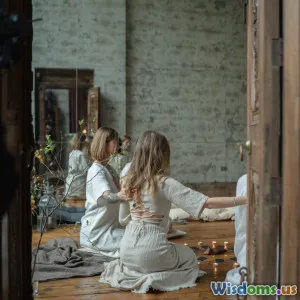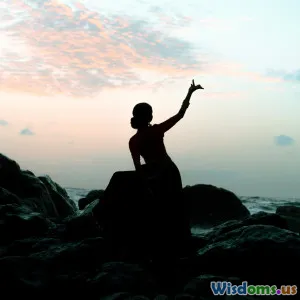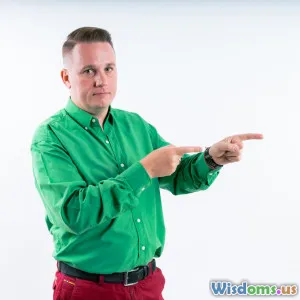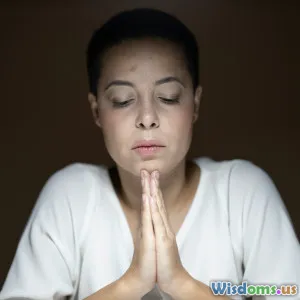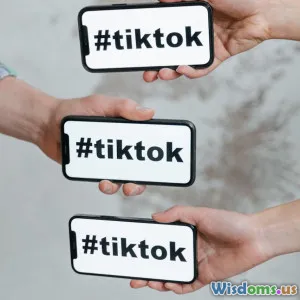
Witchcraft in the Modern World Growing Trends and TikTok Influencers
9 min read Explore how witchcraft is rising in popularity through TikTok influencers and modern cultural trends. (0 Reviews)
Witchcraft in the Modern World: Growing Trends and TikTok Influencers
Witchcraft, an ancient practice enveloped in mystery and often maligned through history, is undergoing a profound renaissance. Unlike the fearful portrayals of the past, modern witchcraft has blossomed into a vibrant and accessible spiritual movement. This revival is markedly prominent on platforms like TikTok, where influencers blend mysticism, personal empowerment, and social justice messages to attract millions. But what exactly fuels this resurgence, and why is TikTok at its epicenter? This article explores the growing trends that modern witchcraft embodies and the influencers who shape its new face.
The Resurgence of Witchcraft in the 21st Century
Historically, witchcraft often symbolized rebellion against social norms and patriarchal structures. Today, the growing embrace of witchcraft speaks to a collective yearning for identity, empowerment, and connection in an increasingly fragmented world. According to a 2020 Pew Research Center study, interest in alternative spiritual practices, including witchcraft and Wicca, has grown among millennials and Gen Z, with 26% of young adults considering or identifying with these beliefs.
Several factors contribute to this resurgence:
- Desire for Personal Spirituality: Many Millennials and Gen Zers identify as 'spiritual but not religious,' seeking personal, flexible belief systems rather than traditional organized religion.
- Emphasis on Self-Care and Healing: Witchcraft’s rituals and practices often focus on mental wellness, self-love, and healing, aligning with modern wellness trends.
- Connection with Nature and Sustainability: The eco-conscious ethos of many witches resonates with growing environmental awareness worldwide.
TikTok: The Modern Cauldron of Witchcraft
TikTok, with its short, highly engaging video format, stands out as the perfect platform for the visual and performative elements of witchcraft. It enables content creators to disseminate knowledge, rituals, and aesthetics in digestible snippets that appeal to younger audiences.
Lightning-Fast Education and Community Building
Where books and in-person coven meetings once constrained knowledge transmission, TikTok transcends geographical boundaries. Influencers post instructional content on everything from lunar magic to tarot readings and spellcraft. This democratization creates a broad tapestry of interpretations and practices, encouraging experimentation and personalization.
For instance, @thewitchofidaho has amassed over 1 million followers by sharing traditional and accessible magical practices complete with historic context. Similarly, @infamouswicked offers deep dives into astrology and shadow work paired with affirmations for empowerment.
The Aesthetic and Identity Dimensions
TikTok witchcraft is as much about aesthetic expression as it is about spirituality. Black hats, crystals, herbs, and ritual candles have become emblematic visuals widely replicated by millions. For many users, adopting a 'witchy' aesthetic signals a resistance to mainstream norms and an embrace of alternative identities.
Creators also engage heavily with themes of intersectionality. Many openly queer, feminist witches use the platform to intertwine magical practices with social justice activism, thus broadening the cultural relevance of modern witchcraft.
Influencers as Cultural Ambassadors
The most prominent witchcraft influencers do more than just entertain — they educate and foster inclusive spaces. Through transparency about their spiritual journeys and unfiltered discussions of their challenges, they humanize the practice, making it approachable and relatable.
Case Study: Biddy Tarot (Brigit Esselmont)
Though better known outside TikTok, Biddy Tarot’s content frequently goes viral on the platform, illustrating tarot’s role in modern witchcraft. Her accessible style has helped demystify tarot decks, encouraging users to view tarot as a tool for self-reflection rather than fortune-telling.
Case Study: Francesca Litton (@witchylitton)
Francesca blends humor, ritual instruction, and modern concerns like anxiety management. Her approachable attitude brings nuance to ancient practices and emphasizes mental health, helping to destigmatize witchcraft amid youth demographics concern about their psychological well-being.
Trend Analysis: Why Witchcraft Appeals Now
The surge in witchcraft can be seen as a response to several contemporary challenges:
- Pandemic-Induced Reflection: During COVID-19 lockdowns, people sought self-guided spiritual practices, with witchcraft rituals providing a sense of control and routine.
- Digital Community as Modern Coven: Social media forms virtual covens, replacing older models with more fluid and accessible communities.
- Economic and Political Uncertainty: Witchcraft’s themes of empowerment and reclaiming personal agency resonate amid feelings of instability.
Google Trends data show searches for terms like "spell kits," "moon rituals," and "tarot reading" dramatically increased between 2019 and 2023, coinciding with social shifts.
Criticism and Challenges
While the TikTok witchcraft boom energizes the community, it invites scrutiny:
- Cultural Appropriation: Some critics argue that elements of witchcraft, especially from indigenous and marginalized traditions, are commodified or misrepresented.
- Commercialization: The rise of "witchcraft products" risks turning spirituality into consumerism, potentially diluting authenticity.
- Misinformation: The brevity of TikTok videos sometimes leads to oversimplification or inaccurate portrayals of complex rituals.
Influencers and followers continue navigating these tensions, often emphasizing ethical practice, cultural respect, and encouraging thorough research.
The Future of Witchcraft in a Digital Age
The relationship between ancient spiritual traditions and modern technology appears synergistic rather than oppositional. The accessibility provided by social media fosters awareness, while the expressive creativity of platforms like TikTok allows witchcraft to evolve with its community’s needs.
Scholars like Dr. Ellen Evert Hopman, an expert on paganism, note, "This digital renaissance of witchcraft presents an unprecedented opportunity for ancient wisdom to stay alive and resonate deeply in contemporary society."
Looking ahead, as younger generations continue to shape spirituality on their own terms, platforms such as TikTok will likely remain influential hubs — cultivating not only new practitioners but also broader cultural acceptance and understanding.
Conclusion
Witchcraft’s growing popularity today reflects more than a passing fad. Rooted in centuries-old traditions, it offers modern seekers tools for empowerment, healing, and identity in turbulent times. TikTok influencers amplify this revival, making witchcraft visible, accessible, and relevant in the digital age. Whether through instructional videos, aesthetic expressions, or activist messaging, they weave a modern spell binding ancient magic to present-day culture.
Understanding this modern witchcraft movement provides insights into how spirituality adapts in the 21st century — an evolution blending tradition, technology, and community with remarkable vitality.
Embrace curiosity and discernment: the magic of today is brewed by the collective stories, innovations, and passions of those who dare to invoke it anew.
Rate the Post
User Reviews
Popular Posts

















